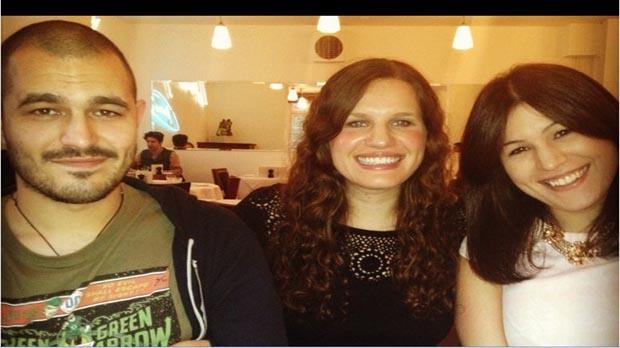
“I was keen to go on a clinical trial. I wanted to try new cancer treatments and hopefully help future generations.”
This study used a device called terahertz pulsed imaging (TPI). To see whether it can show cancer cells during surgery to remove breast cancer or during a test of the  under your arm.
under your arm.
This trial was open for people to join between August 2013 and August 2014. The team published the results in 2017.
For  breast cancer, you might have surgery to remove just the area of cancer. This is a wide local excision or lumpectomy. The aim is to remove all the cancer and about 1 cm of normal tissue surrounding it. The surgeon sends the tissue to the laboratory for a
breast cancer, you might have surgery to remove just the area of cancer. This is a wide local excision or lumpectomy. The aim is to remove all the cancer and about 1 cm of normal tissue surrounding it. The surgeon sends the tissue to the laboratory for a  to check. To make sure there are no cancer cells in the surrounding tissue. This is a clear margin.
to check. To make sure there are no cancer cells in the surrounding tissue. This is a clear margin.
You have further surgery to remove more tissue if there are cancer cells in the clear margin. But you may have to wait for these results to come back.
Researchers looked at a device called terahertz pulsed imaging (TPI) to see if it can test the margin during surgery. TPI uses a harmless type of radiation to find cancer cells in a piece of tissue. In the laboratory, TPI successfully showed the difference between normal breast tissue and cancer cells.
In this study, they wanted to see how well TPI worked during surgery.
The aim of the study is to compare the results from TPI with the results of the pathologist.
The study team found that terahertz pulsed imaging (TPI) can show the difference between normal breast tissue and cancer breast tissue.
Study design
The team used tissue samples of 46 people. They compared the results of using TPI with the results of the pathologists who looked at the tissue samples in the lab.
Results
The team looked at how often the TPI:
The team used 2 different methods to make sure that the results were correct.
Accuracy
The first method showed TPI to be accurate 75 out of every 100 times (75%).
The second method showed TPI to be accurate 69 out of every 100 times (69%).
Sensitivity
Sensitivity shows how well that test can correctly find cancer cells. A test that is highly sensitive means that there are very few false positives.
The sensitivity of TPI was:
Specificity
Specificity tells us whether the test can say correctly that there aren’t cancer cells. A test that is highly specific means that there are very few false positives.
For specificity TPI was:
Both methods showed that TPI:
Conclusion
The team concluded that the number of times TPI was correct is encouraging. Researchers need to larger clinical trials to:
More detailed information
There is more information about this research in the article below.
M. R. Grootendorst, A. J. Fitzgerald and others
BIOMEDICAL OPTICS EXPRESS, 1 Jun 2017. Volume 8, Issue 6, Pages 2932 - 2945
Where this information comes from
We have based this summary on the information in the article above. This has been reviewed by independent specialists ( ) and published in a medical journal. We have not analysed the data ourselves. As far as we are aware, the link we list above is active and the article is free and available to view.
) and published in a medical journal. We have not analysed the data ourselves. As far as we are aware, the link we list above is active and the article is free and available to view.
Please note: In order to join a trial you will need to discuss it with your doctor, unless otherwise specified.
Professor A D Purushotham
Experimental Cancer Medicine Centre (ECMC)
King's College Hospital NHS Foundation Trust
Guy's and St Thomas' NHS Foundation Trust
Technology Strategy Board, Engineering and Physical Sciences Research Council (EPSRC)
TeraView
If you have questions about the trial please contact our cancer information nurses
Freephone 0808 800 4040

“I was keen to go on a clinical trial. I wanted to try new cancer treatments and hopefully help future generations.”